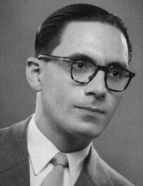

Settling in Lisbon and taking advantage of his free time from a not very demanding bureaucratic job running a social security fund, LFA focused on research in the capital’s archives (1950-1955). After being awarded a grant to prepare his undergraduate thesis between 1948 and 1957, he gathered a wealth of information from the Torre do Tombo, the Biblioteca Nacional [Portuguese National Library] and, above all, the Arquivo Histórico Ultramarino [ Overseas Historical Archive] . Having been the best student in the Brazilian Studies programme at the School of Arts and Humanities in Lisbon, he received a scholarship that allowed him to spend three months in Rio de Janeiro in the summer of 1953. There, in particular, he worked at the Biblioteca Nacional and the Itamaraty library, recalling with gratitude his time in the map section of the Itamaraty library, where he met Jaime Cortesão, then still in exile .
He only returned to Brazil briefly once more, in 1959, for the 4 th International Conference on Luso-Brazilian Studies held in Salvador da Bahia. During the 1950s, he also did research in Spain at the Archivo General de Simancas and the Biblioteca Nacional in Madrid, as well as in Paris at the Bibliothèque Nationale and the Archives du Ministère des Affaires Étrangères and the Archives Nationales, collections he returned to when preparing his doctoral thesis. From the collection and processing of the vast number of documents and comprehensive bibliography consulted, he produced the exemplary work that served as his undergraduate thesis – A diplomacia portuguesa e os limites meridionais do Brasil 1493-1700 [ Portuguese diplomacy and the southern limits of Brazil 1493-1700 ] . As people soon noticed, this was not the first work of a beginner but of a historian of great maturity , and it deserved to be published immediately by the School of Arts and Humanities as a supplement to volume VI of Revista Portuguesa de História (1954). In this thesis, the author endeavours to connect the knowledge about the negotiations that led to the Treaty of Tordesillas (with the definition of the meridian) and to frame the Brazilian territory within this diplomatic restriction, whose limits to the south could not be scientifically defined, which is why incursions of knowledge from São Paulo in particular (the bandeiras ) fit into this purpose. The Portuguese royalty sought to extend the Brazilian territory as far as the River Plate, while the Castilian royalty endeavoured to prevent this expansion. The establishment of the Colony of Sacramento in 1680 was precisely in this vein of progress towards the River Plate. This triggered an issue that would last for a long time. The path was open for smuggling not only Peruvian silver but also leather and cloths that were illegally passed on from Brazil to the people of Buenos Aires. It was an imposition of geography, history and the will of the inhabitants. A lesson in LFA’s erudition, but not small, complicated erudition. He clarifies what seems indispensable, presents his solution – if necessary – and moves on without repeating or trying to convince the reader with arguments confirming the sound reasoning he has already presented.
This work is financed by national funds through FCT - Foundation for Science and Technology, I.P, in the scope of the projects UIDB/04311/2020 and UIDP/04311/2020.
